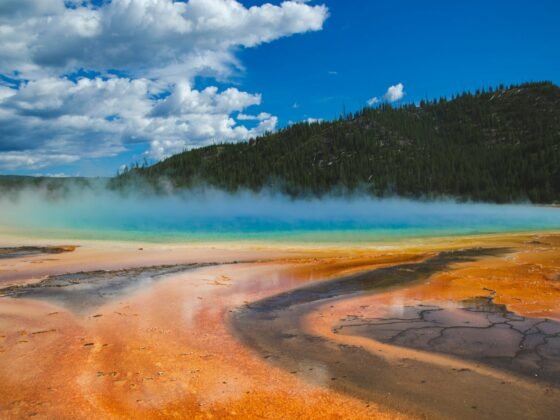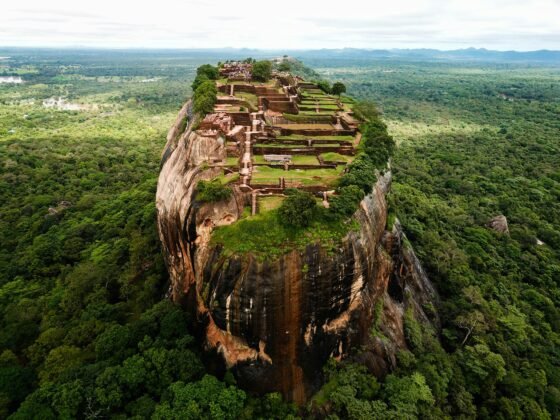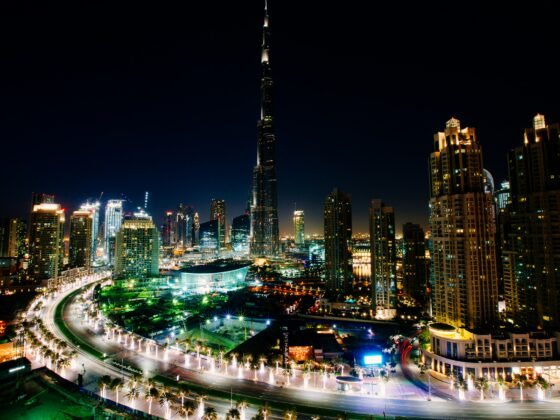All eyes are on Brazil right now and with 19 UNESCO World Heritage Sites spanning cultural and natural gems, there’s plenty to keep even the most hardened traveller enthralled.
Carioca Landscapes Between the Mountain and the Sea in Rio de Janeiro
Rio de Janeiro, Brazil’s largest and best known city, is also one of the more recent places to be recognized as a World Heritage Site, a distinction it received in 2012. The part of the city that was specifically commended was Guanabara Bay and the Tijuca National Park, a vast urban forest that extends from the Corcovado Mountain to the sea. Aside from this, the botanical gardens (which date back 200 years) and the famous Christ the Redeemer statue were recognized. Additionally, Copacabana Bay, one of the world’s best loved beaches, was honoured as being a central feature of the great city.
Historic Centre of Sao Luis
Sao Luis was founded by the French in 1612 and is the capital of the Brazilian state of Maranhao. The city, which is situated on Sao Luis Island (or Ilha de Sao Luis) has long been important for its two ports, Itaqi Port and Madeira Port. The city centre of San Luis, which has a rectangular street plan, contains a large number of historic buildings, including manor houses, public buildings and private dwellings. Named a World Heritage Site in 1997, the Historic Centre of Sao Luis is one of Brazil’s best preserved colonial cities.
Brasilia
The lively city of Brasilia, which is the capital of Brazil, was founded in 1960. Prior to this, the capital was Rio de Janeiro (which in fact many still assume wrongly is the capital). The reason for the move was to make Brasilia a more centrally located city. Founded on 21 April 1960, much of Brasilia’s architecture dates back to 1960s. This city was named a UNESCO World Heritage Site because of its distinctive architecture. Many of Brasilia’s buildings were designed by the renowned modern architect Oscar Niemeyer, who was made Director of the Department of Architecture and Urban affairs in 1956. Brasilia is notable as one of the world’s most carefully planned cities. The detailed urban planning that went into this city’s design was overseen by Juscelino Kubitschek, who was elected president of the Republic of Brazil in 1955.
Historic Centre of the Town of Diamantina
As the name of this town suggests, Diamantina was first made famous when diamonds were discovered there in 1713. Following this, settlements were established and mining became central to Diamantina’s existence until the 19th century when the focus of the diamond industry shifted to South Africa. The historic centre of Diamantina, which was declared a World Heritage Site in 1999, has been well preserved since the town’s founding. It is well known for its stone pavements and adobe houses. This town is not as frequently visited by tourists as many other historic sites in Brazil due to its relative isolation.
Iguazu National Park
This national park, shared by Brazil and Argentina, is named after the Iguazu River and the Iguazu Falls in Parana State and is possibly the most famous of Brazil’s UNESCO World Heritage Sites. The purpose of the park is to preserve the region’s natural beauty as well as its ecosystems. Many endangered species, such as the giant anteater and the giant otter. The waterfall is partly responsible for the lushness of the Iguazu National Park, which was named a World Heritage Site in 1986.
Historic Centre of the Town of Goias
Goias, which is also referred to as Goias Velho (Old Goias) is located in the state of the same name. Until 1937, it was the state capital of Goias. The city, which was founded in 1727, was named after an indigenous tribe, the Goyaz Indians, who were the region’s original inhabitants. Early explorers became fascinated with Goias after finding gold, and it became a notable mining town. There is still evidence of Goias’s past wealth in the form of gold carvings and gold painted churches and other historic buildings. It was named a World Heritage Site in 2001 for its well preserved architecture and unique atmosphere.
Historic Centre of the Town of Olinda
Olinda is located in the northeastern part of Brazil in the state of Pernambuco. The downtown historic centre is a popular tourist attract due to its colonial charm and lively festivals. The Carnival of Olinda is a well-attended event every year, and it’s appreciated as a lower key version of the Carnival in Rio de Janeiro. Olinda, which was founded in 1537, was originally important for its sugar crop. Many of the town’s attractions, such as its many churches and monasteries, date back to the 18th Century. Olinda was named a World Heritage Site in 1982.
Historic Town of Ouro Preto
The city of Ouro Preto, which means ‘black gold’, is in the state of Minas Gerais in the east of Brazil. It was founded in the 17th Century and was part of Brazil’s gold rush. Famous for its well preserved Baroque architecture, the city was named a World Heritage Site in 1980. Because of the wealth due to gold mining, Ouro Preto became a very cosmopolitan city in the 18th century, and this resulted in many painters, sculptors and architects coming to the city and giving it a unique flavour. Today the city’s main industry is tourism.
Jesuit Missions of the Guaranis
This site is composed of five distinct Jesuit missions in Brazil and Argentina. These are Ruins of Sao Miguel ads Missoes, which is in Brazil. The others, San Ignacio Mini, Santa Ana, Nuestra Senora de Loreto and Santa Maria Mayor are all in Argentina. These remains of Jesuit missions, all located in a tropical rain forest, were built in the 17th and 18th centuries. Although each one has its distinctive style, they were all built with the same basic functional layout that includes a church, a residence for the priests and homes for Indian residents. The ruins of these missions were collectively named a World Heritage Site in 1983.
Sanctuary of Bom Jesus do Congonhas
This sanctuary was built in the 18th Century in the traditional rococo style of Italy. It also features seven chapels and an elaborate Baroque stairway. The Bom Jesus Church, completed in 1773, was constructed on the peak of the Morro do Maranhao. It was designed by the architect Francisco Lima Cerqueira. The entire complex took more than a half century to complete. The Sanctuary was named a World Heritage Site in 1985 and is one of Brazil’s most admired architectural masterpieces. Don’t miss the highly ornate sculptures from local artist Aleijadinho which typify the exquisite Baroque art of the period.
Sao Francisco Square in the Town of Sao Cristovao
Sao Francisco Square is a quadrilateral square surrounded by several distinctive buildings. There is the Provincial Palace, Church and Santa Casa de Misericordia and the Sao Francisco Church and convent. All of these buildings were designed in the Spanish colonial style. Sao Cristovao is a river port and an old Portuguese settlement. It was named a World Heritage Site in 2010 for the way it preserves a traditional style of Brazilian architecture.
Historic Centre of Salvador de Bahia
Salvador de Bahia was Brazil’s first capital, from the country’s origin in 1549, though to 1763. As the site of the New World’s first slave market, this city was, from its earliest days, a mixture of Amerindian, African and European cultures. Much of the design and architecture of Salvador de Bahia reflects the style of the European Renaissance. The city centre, which was named a World Heritage Site in 1985, contains a large number of monuments that were constructed between the 17th and 19th centuries. Salvador de Bahia preserved many of its fine Renaissance structures and the highlight is undoubtedly the houses which are plastered in bright colours. The city centre went through a major restoration in the 1990s and attracts many tourists from all over the world.
Serra da Capivara National Park
This national park is located in the Northeastern Brazilian state of Piaui. It is particularly significant for its well preserved prehistoric paintings. Some of the region’s earliest rock art may date to as early as 26,000 BC. Serra da Capivara became a national park in 1979 and was recognized as a World Heritage Site in 1991 thanks to its rich prehistoric legacy – which is said to be the greatest of its kind within the Americas. In fact, so far, there are more than 30,000 examples that have been uncovered and catalogued to date. The park is also a popular destination for trekking and hiking and contains 13 trails, some of which are quite challenging.
Atlantic Forest South – East Reserves
The Atlantic forest, which encompasses about 507,902 square miles, contains a variety of eco-regions, such as tropical and subtropical moist broadleaf forests and many others. Including mountains, coastal islands and wetlands, it contains a wide diversity of plant and animal life. Overall, the site consists of 25 protected areas. It attracts many visitors, especially people who are interested in eco-tours and green travel experiences. It was named a World Heritage Site in 1999 and is located within Paraná and São Paulo states.
Brazilian Atlantic Islands: Fernando de Noronha and Atol das Rocas Reserves
Collectively the Brazilian Atlantic Islands were named a World Heritage Site in 2001 and contain the largest population of tropical seabirds in the Western Atlantic. These islands are actually a submarine mountain range that were born from volcanic activity and sit some 13,000 feet off the ocean floor. The rugged basalt peaks nestled within the pristine turquoise waters were first spotted in 1503 by European Amerigo Vespucci. Measuring just 10 square miles, this archipelago is significant for the number of dolphins, sharks, turtles and other marine animals
that are found here. Spot migratory and endemic bird species such as frigates, white terns, and the white-tailed tropic bird. Needless to say, this is a great spot for swimming, snorkelling and scuba diving, where rich gardens of coral can be explored. Fernando de Noronha also caught Charles Darwin’s eye in 1832 when he sailed the region and noted the archipelago in his diaries. The waters and wildlife must be protected from unauthorized boats that sometimes enter the region in order to engage in illegal fishing.
Central Amazon Conservation Complex
This area includes a large landscape that contains forests, lakes, rivers and islands. It is significant for its rich and envied biodiversity. Anavilhanas Ecological Station, Amana Sustainable Development Preserve, Jau National Park and Demonstration area of the Mamiraua Sustainable Development Preserve are the 4 parks that comprise the complex. The Central Amazon Conservation Complex, named a World Heritage Site in 2000, is the largest protected area in the Amazon Basin.
Pantanal Conservation Area
This area, which is mainly within the state of Mato Grosso do Sul in Brazil, but also extends into parts of Paraguay and Bolivia, is among the world’s largest tropical wetland regions. It contains at least 12 distinct sub regional ecosystems, making it an extremely diverse and ecologically important area. The Pantanal Conservation Area consists of 4 protected areas and was named a World Heritage Site in 2000. Home to giant otters, jaguars and capybara (pictured above), the area is often overlooked in favour of the mighty Amazon, this is an amazingly diverse area that should not be missed.
Cerrado Protected Areas: Chapada dos Veadeiros and Emas National Parks
The Cerrado is a vast savanna that contains over 1 million square miles in central Brazil. It is recognized as the world’s most biologically diverse savanna. The Chapada dos Veadeiros National Park is in the northeastern part of the state of Goias. The Emas National Park is in the southwestern part of Goias. Together, these national parks were recognized as a World Heritage site in 2001. Both of these national parks contain diverse fauna and flora that are crucial for maintaining the Cerrado region.
Discovery Coast Atlantic Forest Reserves
In addition to the Atlantic Forest South-East Reserves, the Discovery Coast Atlantic Forest Reserves is also a World Heritage Site. This area is located in the states of Espirito Santo and Bahia. These areas are especially vital for the ecology of the planet because the rainforests here are the most biodiverse in the world. In total, this area contains 8 distinct protected regions. It was named a World Heritage Site in 1999.
Map Credit: Wikitravel
Image credits; 4, Ouro Preto; Adriano3000 via Wikipedia, 5, Salvador de Bahia Fernando Hidalgo Molina CC A 2.0; 6, Pantanal Arthur Chapman CC A 2.0












